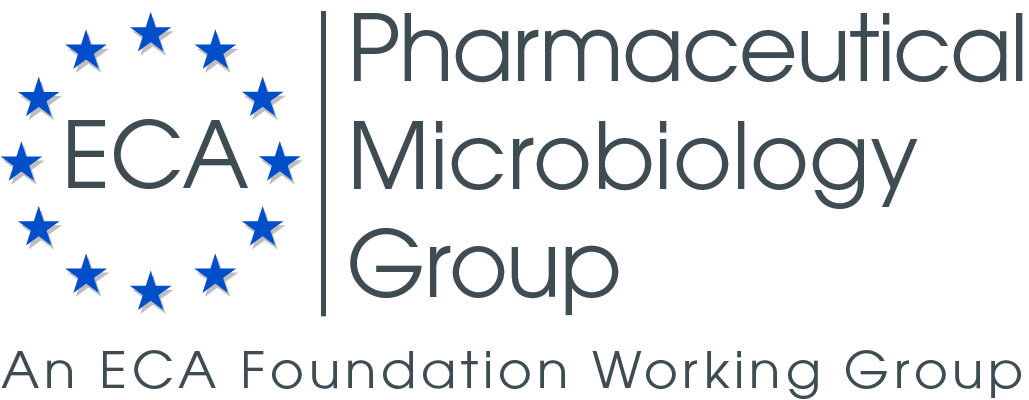|
|
|
 |
06. Sterility Test
|
|
|
|
-
TESTS FOR THE STERILITY OF PHARMACEUTICAL PREPARATIONS; THE DESIGN AND INTERPRETATION OF STERILITY TESTS - more
-
The influence of incubation conditions in sterility tests - more
-
Towards an Improved Sterility Test - more
-
Microbiology in Filling and Sterility Test Isolators - more
-
Sterility Testing of Stem Cell Products by Broad-Range Bacterial 16S Ribosomal DNA Polymerase Chain Reaction - more
-
Evaluation of the ScanRDI® as a Rapid Alternative to the Pharmacopoeial Sterility Test Method: Comparison of the Limits of Detection - more
D. Maxwell Bryce B. Sc., B. Pharm., F.P.S., A.R.I.C.
http://onlinelibrary.wiley.com/doi/10.1111/j.2042-7158.1956.tb12188.x/abstract
STERILISATION was defined in the United States Pharmacopaeia (XIIIth Revision) as "the destruction of all living organisms and their spores in, or their removal from, materials". The word is similarly defined else- where, for example, in the British Pharmaceutical Codex 1954 and the Japanese Pharmacopaia 1951. By inference sterility is the state of being free from living organisms and a sterile product is one entirely free from living organisms of all types. This concept is simple enough but unfortunately it is unreal, being incapable of experimental verification.
A product is generally regarded as sterile because it has been subjected to a process believed to destroy or remove all micro-organisms and may therefore be expected to pass any sterility tests specified by national pharmacopaeias or other authorities. Practical experience however has shown that neither exposure to a process of sterilisation nor passing sterility tests can give absolute certainty of sterility, in the sense of complete absence of living organisms. The most that can be claimed is a probability that the product is sterile although that probability may be very high as, for example, when a needle has been heated until it is red hot or saturated steam under pressure has been properly applied.
The designation sterile is therefore to a certain extent arbitrary and official restrictions are generally placed on its use.
|
|
|
Bugno A, Pinto Tde J
PDA J Pharm Sci Technol.
Abstract
Studies were conducted to evaluate the effects of media, incubation temperature and duration on the detection of bacteria and fungal growth using British, United States and Brazilian compendial sterility test methods. 5 to 50 CFU of nine different microorganisms (including both anaerobic and aerobic bacteria and molds) were used to contaminate test units containing various growth media (sobean-casein digest, thioglycollate, Sabourand and Causen broths). Test units were incubated at temperatures ranging from 12 to 42 degrees C for 1 to 28 days. Inoculations were conducted according to compendial procedures. Optimal detection conditions were obtained at 22 to 32 degrees C over 14 days using soybean casein digest and thioglycollate broths.
|
|
|
JEANNE MOLDENHAUER and SCOTT VW SUTTON
https://pubmed.ncbi.nlm.nih.gov/15663059/
The sterility test is generally recognized as a flawed test for its stated purpose. Since the original description in 1932, this test has generated controversy as to its role in product quality testing and in terms of means to
improve the assay. As early as 1956 Bryce published an article describing the two critical limitations of this test (1). He put forward that the test was limited in that it can only recogni-ze organisms able to grow under the
conditions of the test, and that the sample size is so restricted that it provides only a gross estimate of the state of "sterility" of the product lot. Other concerns about the sterility test (e.g., choice of sample size, choice of media, time and temperature of incuba-tion) were extensively reviewed in an article by Bowman (2). There have been several changes in the compendial sterility test since that time, culminating in the internationally harmonized test (3). Ho-wever, the two basic problems outlined in 1956 by Bryce remain today.
|
|
|
Christian Vogt, Alexandra Stärk
http://www.americanpharmaceuticalreview.com/Featured-Articles/39301-Microbiology-in-Filling-and-Sterility-Test-Isolators/
Isolators in the pharmaceutical environment are used to produce and test sterile drug products with a minimized risk of microbiological contamination from the surrounding. Isolators realize a separated aseptic core practically free of microorganisms, what offers maximized protection for production and testing. For the realization of such an isolated aseptic core, considerations in microbiology play a crucial role in the validation, maintenance and control of the asepsis of an isolator.
Isolators should be run with an adequately developed decontamination cycle to achieve a desired level of microbial reduction in the isolator chamber prior production or testing. After achievement of aseptic conditions by decontamination, the maintenance of the asepsis in the isolator chamber is controlled by the applied overpressure and other control mechanisms in place. A well-designed chamber, adequate maintenance and an established monitoring program play a decisive role in keeping an isolator under control. However, microbiological control starts much earlier in the conceptual design of the isolator with a well-accessible and well-designed chamber which is good to maintain and with surfaces and materials easy to clean and decontaminate. The development and qualification of an adequate decontamination cycle, using biological indicators of Geobacillus stearothermophilus [1,2] is essential, and should be verified for every routine cycle by a defined physical and microbiological monitoring program. Physical environmental monitoring gives indirect information on the microbiological status of the isolator, as some of the detected particles could be microorganisms (however, up to now no correlation is known on this matter). More significant is the microbiological environmental monitoring with nutrient media. Relevant for microbiological control is also the differential pressure of the isolator, as ingress of microorganisms from the surrounding is possible in case of downfall of the pressure to (or under) the level of the environment. Therefore, production isolators should be located in a microbiologically controlled environment (Zone C or D) to minimize these scenarios (and also to minimize the bioload of the material prior to decontamination) [3]. Other physical parameters liketemperature, humidity and air velocity do not have an impact on the microbiological status, if they are in normal working range.
|
|
|
Tokuno O, Hayakawa A, Yanai T, Mori T, Ohnuma K, Tani A, Minami H, Sugimoto T.
http://www.ncbi.nlm.nih.gov/pubmed/25617390
Abstract
OBJECTIVE:
To evaluate broad-range 16S ribosomal DNA (rDNA) polymerase chain reaction (PCR) as a rapid screening tool to detect bacterial contamination of stem-cell products.
METHODS:
We performed the evaluation using whole blood spiked with serially diluted bacterial-type strains. Detection sensitivity was defined as the bacterial concentration for which all replicates were positive at each concentration (100% detection). We tested the sterility of 29 bags of autologous peripheral blood stem cell (PBSC) products harvested at our facility using the 16S rDNA PCR method.
RESULTS:
The detection sensitivity of 16S rDNA PCR in spiked whole blood was 10¹ to 10² colony-forming units (CFU) per mL, depending on the bacterial strain. We detected no amplified 16S rDNA among the PBSCs we used in this study. The BacT/ALERT automated bacterial culture system that we used also showed no positive signals in any of the PBSCs tested.
CONCLUSIONS:
Our data indicate that bacterial 16S rDNA PCR is a useful alternative for rapid sterility testing, not only for blood products used in transfusion medicine but also for stem-cell products used in regenerative medicine.
|
|
|
Ron Smith, Mark Von Tress, Cheyenne Tubb, et al.
http://www.ncbi.nlm.nih.gov/pubmed/21502036
Abstract
Two sterility test methods, the ScanRDI® rapid sterility test and the United States Pharmacopeia/European Pharmacopoeia/Japanese Pharmacopoeia (USP/EP/JP) compendial sterility test, were compared with respect to the limits of detection for the presence of viable microorganisms in aqueous solutions at low inoculation levels. The ScanRDI® system employs a combination of direct fluorescent labeling techniques and solid-phase laser scanning cytometry to rapidly enumerate viable microorganisms from aqueous samples, whereas the compendial sterility test is a qualitative, growth-based method that uses a visual assessment of turbidity to indicate microbial contamination. Eight microorganisms were evaluated, seven compendial microorganisms (Clostridium sporogenes, Escherichia coli, Pseudomonas aeruginosa, Staphylococcus aureus, Bacillus subtilis, Aspergillus niger, Candida albicans) and the Gram-positive anaerobe Propionibacterium acnes. The number of viable organisms was estimated using the ScanRDI® method and the conventional sterility test method using most probable number methodology. The mean difference between the methods was computed and 95% confidence intervals around the mean difference were estimated. The ScanRDI® method was found to be numerically superior and statistically non-inferior to the compendial (USP/EP/JP) sterility test with respect to the limits of detection for all organisms tested.
|
|
|
|



